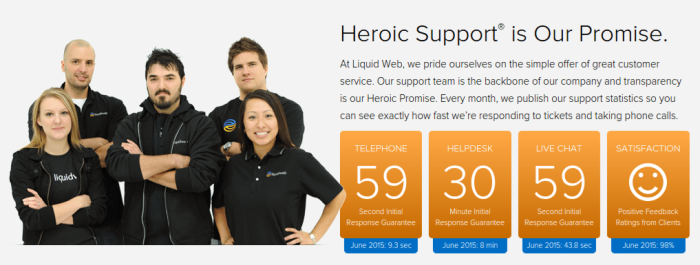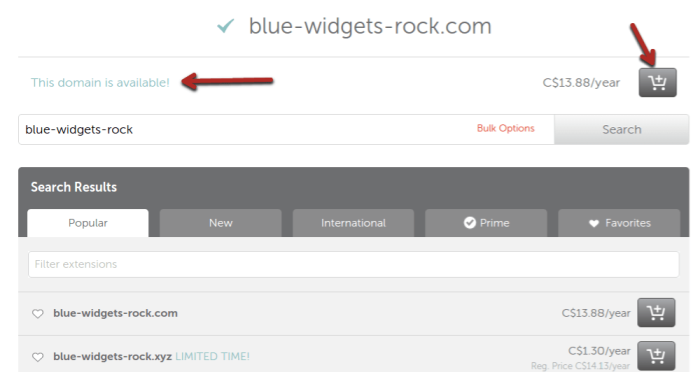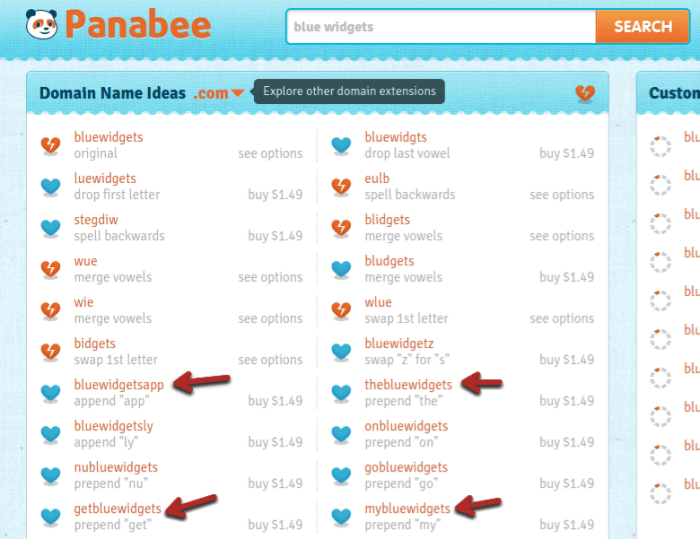
Climbing a mountain takes months or years of hard work from training to actually hiking the mountain. If you want to build a website for your business, it’s no different.
Most of the articles that I write on my blogs are catered towards intermediate to experienced marketers and those with a business website.
But that’s not fair.
Some of my readers are just preparing to take their first steps up the marketing mountain, some who only have their first domain name registrar confirmation. Many are trying to decipher how to use a website template.
If you’re one of those readers: I’m sorry. Today, hopefully, I can make it up to you.
The most common question I get from beginner readers is along the lines of: “How do I build a website so that I can start testing marketing tactics?”
It’s a great question.
Today, I’m going to go through the process of getting a website up and running from scratch. I’ve broken it down into clear steps and I have tried to make things as simple as possible. Everything from a site builder, perhaps using a website template to web design and using social media to develop your new business website.
Ready? Let’s go…
Why You Shouldn’t Rely on Third-Party Sites to Build a Website
Everyone has seen ads for site builders, essentially website templates, that let you “create a website by pushing a button!”.
These are typically blogging platforms like:
- Blogger
- WordPress.com
- Tumblr
- TypePad
- Wix
Most offer free and paid plans, depending on site complexity, if you need web hosting and how much traffic you expect to get.
I understand why these sites are really tempting the first time you build a website, but you should really avoid them.
If you’re just messing around and blogging as a hobby – no problem – feel free to use a website template.
But, if you’re trying to build a business website, you’re setting yourself up to fail.
Bottom line: don’t do it!
Here are some reasons why not to use these sites to build a website.
Reason #1: It Doesn’t Save Money
They hook you with the free offer after you’ve cued in the domain name registrar. But, then you discover that you can’t do much with that free plan.
Sure, you can set up a basic blog, but it has ads on it (that don’t benefit you), you get terrible support and you have significant space limitations.
So then, you decide to upgrade to a subscription plan.

While they aren’t extremely expensive, they aren’t cheap, either.
Compared to hosting your own site, it can be much more expensive to build a website on a third-party site because they try to get you to add on a bunch of features you might not need.
Reason #2: Third-Party Site Builders are Much More Restrictive to Build a Website
This one is another killer to me. At first, you’re not going to be customizing your website much – I understand that. So it’s great that you have the site builder and web hosting all bundled together.
But, you will stunt the growth of your business website. Compared to a standalone content management system (CMS), you have very limited options, in terms of web design, functionality, file access, and ability to customize your site – with proper brand development compared to a website template.
Reason #3: Building a Website Isn’t Any Easier on Website Template Platforms
The final reason that people are drawn to these website template platforms is that they promise that they are “easier”. For an owner building a website for the first time, this is attractive at first.
In reality, I don’t think they are easier to use.
If you know what you’re doing, you can set up a WordPress business website in 5 minutes:
Each time you do it, you’ll learn more and get better (and faster) at it.
The CMSs that I’ll show you later in this article are more powerful and easier to use than any of these third-party platforms for building a website.
Build a Website Step 1: Your Site Needs Somewhere to Live (aka web hosting)
The first component of building a website is finding a web host.
It might seem intimidating, but it isn’t.
Think of your website as a collection of files. When it’s “hosted” on your computer (like all of your other files), only you can open it.
When you host those files on a web server, anyone can connect to that server through the internet.
Hosting companies offer space on these servers, or even on your own dedicated web server if you’re willing to pay for it.
That’s really all there is to it.
You purchase a hosting package from a hosting provider, usually offered by the domain name registrar, and they let you upload your website files (or offer plugins to make it easier).
Once you connect that domain name (that’s step 2 – don’t skip ahead!), anyone can view your website.
There are a few things that you want to look for in web hosting.
Hosting Factor #1: Uptime Reliability
If your hosting isn’t operating as it should be, no one can access your website. This is just as bad as not having a website in the first place.
Any good hosting provider has no problem offering an uptime guarantee. Typically you’ll see something like a “100 percent network uptime guarantee” by the webserver.
That doesn’t mean that your site will be up 100% of the time, but, hopefully, it’s close to that. If your business website does go down, these guarantees typically mean that you can be compensated with hosting credits.
As to what to expect, your site should rarely go down. If you suspect you’re having issues, sign up for an uptime tracking tool, like uptime robot.
It will tell you how often your site is down and if you need to find a new webserver to host.
Hosting Factor #2: Customer Service
Things are going to go wrong. Fact. If you’re a beginner with websites, you’re going to mess things up, once in a while.
Usually, things are easy to fix, at least to an expert.
Say you do something or something out of your control causes your site to go down. The longer it’s out, the more it’s costing you.
If you made the mistake, your site will likely be down until the issue is fixed. That’s where you need good web server support. Most good support teams will even have full backups of your site that they can restore if worse comes to worst.
Look on the website for details about the host’s support team:

While you may like using email, it’s the absolute worst form of support when time is of the essence.
You want to be able to contact your support by telephone and/or live chat. Both are better, but at least one is necessary.
Hosting Factor #3: Site Speed is King
While I’m not going to go into the fine details right now (they aren’t important before you have your site up and running), site speed is extremely important to SEO.
Fast sites not only rank better, but a fast site will also help you to maximize your conversions.
Hosting is only one part of the equation, but an important one. The difference between poor and good hosting can be a 50%+ difference in loading time, which is huge.
So, how do you find a fast host?
This is tricky because there’s not an easy way to compare them.
Hosting speed is one thing you’ll never be 100% sure of until you try it (or you get a trusted recommendation, I recommend Bluehost). That being said, keep the following best practices in mind:
- Avoid Shared Hosting: Shared hosting means that you’re sharing a web server with hundreds or even thousands of other sites. It’s slow, and, if you get unlucky and share with spammy sites, your business website could even be penalized by Google. Either VPS (sometimes shared but in a better way) hosting or dedicated hosting (best option) are solid alternatives.
- You Get What You Pay For Hosting is one of the biggest fees in starting a brand new business website. If you have an extremely limited budget and want to go for the cheapest hosting, that’s fine, just don’t expect anything amazing for $5/month. In general, the more you’re paying, the faster the hosting will be. Speed will help connect you in the social media world where you will likely be playing with ads and posts.
Spend some time in web hosting forums, until you find a few web hosts that you are comfortable with trying.
Then, compare services and prices and pick a plan that works for your budget. Next, you can move on to step 2.
Build a Website Step 2: Choose the Perfect Name
It’s time to start putting some thought into what your website will be about.
If you already have an idea in mind, this will be easy. If not, figure out what your great idea will be:
- Earning more money: Finding the right idea
- The Best Entrepreneurs Don’t Come Up With Great Ideas, They Solve Market Needs
The reason that you need to have at least a general idea of what your business website will be about is that it’s time to pick a name for it. You can search millions through domain name registrars, but take your time to find one that resonates with you.
Important note: There is no perfect domain name. While some names might be a bit better than others, it’s ultimately a very small part of your business, compared to the actual content on your website.
Come up with a few names using the following methods, then put them aside for a night and pick your favorite in the morning.
Option #1 – Brute Force Method
If you’re a particularly creative person, you can try your hand at coming up with a great domain name by yourself, off the top of your head.
This was much easier years ago, when fewer good domain names were taken, but it’s still possible if you get creative.
Pick any domain name registrar (where you can purchase the domain), and then search for the domain names that you come up with. It will tell you if the domain is available to purchase or not.

Note that you should try to avoid using hyphens in a domain name, even if the domain name registrar is trying to give you the deal of the century. If you’re brand new, take some time and review this list of domain name best practices.
One of the most highly rated domain registrars is Domain.com
Option #2 – Use a Tool
If you need a little spark in creativity, there are some great free domain name generators at your disposal.
Enter one or two keywords and the generator will look for ways to combine those words into a domain name. The really convenient part is that they also show you if the domain is available.
You can register a name through the link they provide (which will be an affiliate link to a domain name registrar), or just go to your favorite registrar and do it.
The first tool example I have is NameMesh. As the name suggests, it tries to mesh words together. If you check the “hide registered” button, you’ll only see domain names that are actually available.

Another good tool is Panabee. It works in the exact same way, but could give you different results. If there’s a blue heart next to the suggested domain name, it means that it is available for purchase.

Many of the names will be silly, but you’ll typically get a few that are pretty good.
Once you’ve picked a domain name, you need to register it and then point your domain name to your hosting account. This is fairly simple. Your hosting company will send you an email after registering that will contain DNS servers (which look like web server addresses).
If you Google “[name of domain registrar] + DNS servers”, you can typically find a help document that will show you where to input your domain name within your hosting account.
In some cases, you might find your preferred domain name is unavailable. If that happens, try mixing up the words, or adding a verb to the name.
Build a Website Step 3: Choose a CMS
CMS stands for content management system.
Remember that you store your website’s files on your hosting server. If you really wanted to, you could edit these files every time you wanted to make a change to your business website.
Obviously, that’s kind of a pain to do.
A CMS lets you edit your website from the domain itself. You can log in to the domain and then customize your layout, settings, and content, and create new posts and pages, often using website templates that are easy to use.
In other words: It makes creating and updating a website much easier and saves you a ton of time.
There’s no perfect CMS. There are hundreds out there, some better than others. In general, though, all of the top ones have different strengths and weaknesses.
I’m operating under the assumption that you’re just trying to get a relatively basic website or blog up and running. If you are, stick to one of the popular CMSs that I’m about to outline. It will make your life a lot easier.
If you’re trying to create a custom web app or complicated tool, you’re going to need a custom solution. Either partner with a developer for your project or hire a development firm.
It would be impossible to show you, step-by-step, how to install each of these on every web server, but you can find a tutorial if you Google or search on Youtube for:
“install [CMS name] [hosting company]”
Option #1: WordPress
WordPress is the king of CMSs. It is by far the most popular option for this and it’s user-friendly business website templates and ease of social media sharing.
Just to save from some confusion: WordPress.com is the third party site where you can create free blogs, but WordPress.org is where you can download the WordPress software to install on a website.
WordPress rose to fame as a fantastic blogging platform. If you’re mainly looking to set up a blog-based website, it’s a great option.
It features a very intuitive admin back end that makes changing the most basic website template options, as well as creating new posts and pages, simple.
One area that is both a strength and a weakness is plugins.
WordPress has over 57,000 plugins in its library – it’s huge.
This is good because it means that you can use plugins to make WordPress do almost anything that you want, including using social media to drive traffic to your business website.
However, not all aspects of plugins are good:
- They can bloat your site: It’s important to not get carried away with plugins. If you have too many, they will significantly slow down your website.
- They can be security risks: When plugins are kept up to date, they’re pretty safe. However, since most plugins are free
source https://neilpatel.com/blog/from-0-to-launch-6-steps-to-building-your-first-website/
No comments:
Post a Comment